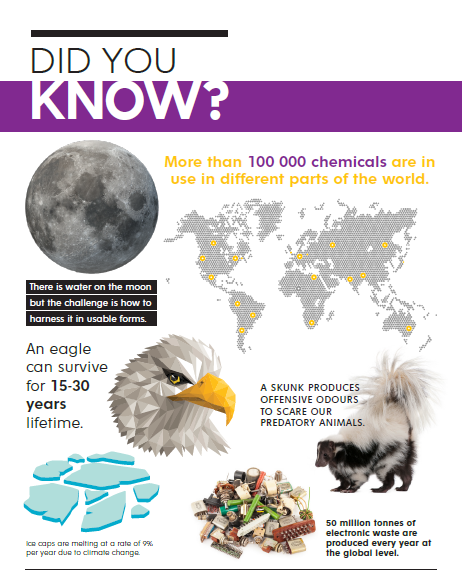Coming of the digital age
The digital evolution happening in the technological age, is one of the biggest breakthroughs of our generation. Advent of computers, mobile phones, printers and other electronic gadgets has become a pivotal facet of daily life. The gadget craze has literally gripped all age groups.
However, dealing with the waste products at the end of the life cycle is an issue which remains unresolved in many parts of the world, resulting in the generation of electronic waste. Electronic waste (e-waste) includes waste electric and electronic devices commonly referred to as WEEE – Waste Electrical and Electronic Equipment. Typical forms of e-waste include laptop screens, circuit boards, old fridges, freezers, electronic equipment containing Polychlorobiphenyls (PCBs), fluorescent tubes and batteries. More than 50 million tonnes of electronic waste is generated globally. City councils are normally used to dealing with general municipal waste comprising of paper, plastic, glass, rubber, aluminium and other less complex waste constituents.
Electronic Waste is emerging as a special waste stream in many developing countries including in Zimbabwe. Controlling this waste stream is necessary in order to promote sustainable development. Stockpiles are actually building up in many African countries. In some countries electronic waste is accumulating under the guise of second hand imports of electronic goods. Smuggling also makes matters worse in the middle of the burgeoning crisis
Toxicology of electronic waste
Toxicology refers to the dose-response effects of hazardous materials with relation to exposure of humans and other organisms. It gives us an indication of the adverse effects which are exhibited by a harmful substance.
Electronic waste is well known to exhibit some toxic characteristics due to its composition comprising of toxic chemicals. In cases where electronic waste is burnt, toxic emissions and Volatile Organic Compounds (VOCs) can be introduced in the environment at the detriment of air quality. Heavy metals such as lead, cadmium and chromium when burnt, can easily accumulate in fatty tissue of the body and later exhibit chronic effects in different body organs.
Heavy metals in electronic waste and effects on children’s developing nervous systems
In young children, heavy metals can affect the development of nervous systems, thereby hampering their learning capabilities. Children can experience lead poisoning due to exposure to lead fumes. Children also face double tragedy as they do not have the ability to understand fully the conditions affecting their bodies. E-waste exposure can induce mental problems in young children through damaging the nervous system development. The World Health Organisation (WHO) warns that exposure to Electronic a waste can result in harmful effects on the mental health of children.
The world cannot continue to watch the growth of electronic waste without action being taken. A few private sector companies such as Enviroserve Dubai are implementing programmes and projects to deal with Electronic Waste. The Switch-Asia Project documented success stories of the proper way to deal with electronic waste.
Cell phone dealers and those who have got repair shops for electronic gadgets require thorough training in handling electronic waste. This will ensure that there is an environmentally sound manner of dealing with electronic waste
According to information gathered by the Green Business Gazette, there is inadequate Personal Protective Equipment (PPE) in organisations which carry out dismantling of electronic waste and electronic gadgets, despite the inherent risk associated with it.

Fool’s gold fuelling environmental damage
E-waste recyclers in some countries are putting a lot of effort in burning circuit boards and constituents of electronic waste in order to recover precious minerals such as gold and silver. Despite earlier notions that believed that significant amounts would be found, it is apparent that the only reward has been significant exposure to heavy metals and health risk to humans. Commercial recovery is possible albeit advancement on recovery technology. Global experiences recognise the fact that 10% of global gold output is used to manufacture electronic products.
Changing procurement patterns
Consumers must wake up to the reality of the effects of electronic waste and begin to pile up pressure on the manufacturers of electronic equipment. This includes promoting communication on the hazardous constituents of electric and electronic products by manufacturers. Consumers can also purchase products which are rated for energy saving and those with less toxic substances
Potential effects of electronic waste
- Adverse effects on the nervous systems of young children
- Contamination of foods
- Accumulation on body organs
- Inhalation of toxic fumes
- Dizziness
- Nausea
- Vomiting
- Birth defects
Policy and regulatory strategies
Countries are beginning to adopt policies and laws which govern electronic waste and electric waste. These laws restrict the unlawful dismantling of electronic waste. Training is becoming mandatory as well as the inspection of facilities. Some institutions are applying for waste management licenses under the guise of recycling waste but with an intention to recover precious minerals such as gold and silver. The belief which considers used electronic gadgets as having large amounts of gold and silver is a key driver of the illicit growth of the e-waste sector and is misguided in the context of sustainable development.
Planned Obsolescence
Some electronic equipment manufacturers produce goods in a way that they have to be replaced regularly. This scenario is called planned obsolescence. In the context of sustainable consumption and production, built-in obsolescence threatens the ability of the planet to attain sustainable development
As we focus towards the Post 2015 Development Agenda, the area of e-waste requires urgent redress if we are to attain the Sustainable Development Goals (SDGs) by the year 2030.

Author
-

Tawanda Collins Muzamwese is the Editor in Chief of the Green Business Gazette Magazine. He is is an international consultant in sustainable business development with massive experience in training, consulting and auditing. He has facilitated capacity development in more than 100 enterprises drawn from over 30 countries. He is the founder of the sustainability think-tank called Toxiconsol Consultancy t/a African Sustainability Consultants. He is the Editor in Chief of the Green Business Gazette Magazine. He is a consultant and business coach with over 13 years experience. Tawanda is a Management Systems Consultant working on promoting development and implementation of ISO Standards (ISO 14001:2015, ISO 9001:2015 and ISO 45001:2018) in both developed and developing countries. With his inspirational and pragmatic writing style he has written cutting edge books including: 1) How to grow a Side-hustle into a viable business - Overcome Salary Dependency 2) The Leading Consultant: How become an authority in your professional field 3) Step-by-Step Guide to implementing Safety, Health, Environment and Quality Management Systems 4) Stepping on Higher Perspectives: Greatness Tips Motivational Series 5) Sustainability Guidebook for Boards and CEOs: Leading from the front Tawanda writes about sustainability, motivation, safety, health, environment and quality management. His books are relevant to both developed and developing countries. With practical approaches and case studies, he provides incisive insights into entrepreneurship. His philosophy is based on the premise that every human being has potential to make a significant difference in their lifetime. He writes books on taking personal responsibility for progression in life. He motivates entrepreneurs to implement income generating projects and determine their own financial destiny. He also motivates companies to take up sustainability initiatives. A start-up coach, public speaker, environmentalist, safety, health and quality management expert, Muzamwese bridges the gap between theory and practice through building capacity and sharing practical case studies in his books.
View all posts



